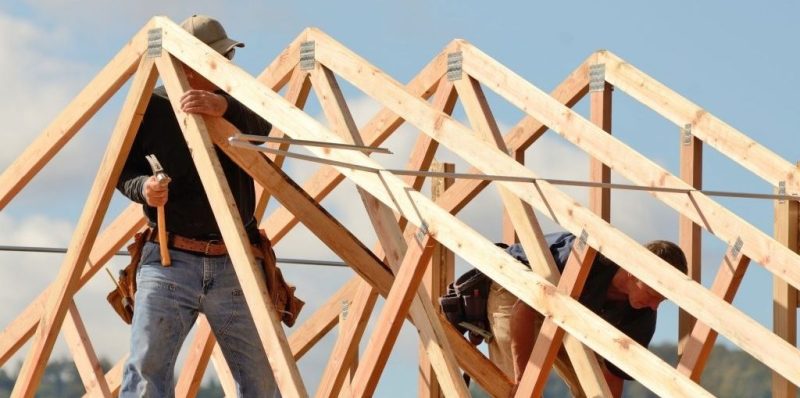Between 2008 and 2020, more than 50 wooden buildings with heights between 7 and 24 floors were built around the world. That’s more than 70 meters high!
Wood has been one of the most used materials by humans to build buildings since the beginning of history. Although the use of steel, concrete or iron has brought significant advances to construction, wood has never lost its popularity. In fact, the number of wooden houses around the world may surprise many readers. Did you know that countries like Japan, Scotland or the United States are leaders in wood construction? Indeed, the proportion of new housing construction, both in whole and in part, can exceed 60% in Japan, 70% in Scotland, and 85% in the United States.
Despite this popularity, in the countries of our region it is common to associate the construction of wooden houses with projects of low quality, low budget or small size. This stereotype is not correct. In recent decades, the wood industry has evolved thanks to the development of new technologies that would allow the general use of this material in construction. For example, between 2008 and 2020, more than 50 wooden buildings with heights between 7 and 24 stories were built around the world. That’s more than 70 meters high!
Why could wood be the star material for housing construction in the 21st century? In short, for productivity and impact on the environment.
According to data from the United Nations (UN), the world population is expected to grow by 25% in the next 30 years, going from 7.7 billion people in 2020 to 9.7 billion in 2050. This translates into an increase in demand for resources, especially housing. In this sense, the World Bank estimates that, by 2030, the housing deficit will reach 240 million housing units. How countries deal with this deficit will be critical to ensuring global sustainable development.
When dealing with this great demand for housing construction, the sector must be responsible with the preservation of the environment. And it is that the construction sector has a double impact on the environment: i) The sector is responsible for a third of the world’s waste generation, whether produced by construction or demolition. ii) Housing construction represents 36% of final energy use in the world and 39% of CO2EQ globally.
According to a 2022 study, there are six sectors that could cut global emissions by at least half by 2030, one of which is construction. The manufacture of houses with low carbon footprint materials is part of the solution to this problem and wood could be one of the options used.
Environmental benefits of wood construction.
Wood construction has multiple benefits in environmental terms. Among them, these stand out:
1) It is the only renewable and recyclable construction material. If the forest is managed sustainably, the trees can be a renewable resource. In addition, wood also requires less energy to be processed.
2) It has the ability to absorb carbon. Wood accumulates large amounts of CO2 and its industrialization generates lower greenhouse gas emissions than other materials. For example, producing a ton of wood generates 33 kilos of net emissions, compared to 264 kilos for cement and 694 kilos for steel.
3) Produce less waste. The use of wood generates less waste and speeds up construction times
4) Greater energy efficiency. Wood contributes to energy efficiency due to its ability to conduct heat, which makes it a better insulator than other materials. It is 400 times better than steel and 15 times better than concrete.
In short, processed wood construction not only adds value by serving as an active absorbent of CO2, but also significantly reduces emissions linked to the industrial construction process. In addition, in this process costs and possible emissions are reduced because it is more efficient in terms of energy consumption.
What technical benefits does wood provide in construction?
In addition to the above, there are also reasons why wood is a first-class construction element:
- i) Great flexibility and low weight. It is an optimal material to resist earthquakes and reduce the volume of foundations.
- ii) High insulating capacity. It is capable of insulating heat up to six times more than brick, 15 times more than concrete and 400 times more than steel
iii) Fire resistance. In large-volume pieces, it has high resistance to fire and takes longer to collapse than steel structures.
- iv) Construction speed and cost reduction. By offering the possibility of working on dry sites, it increases construction speed and lowers costs
Wood construction in Uruguay.
In a future article we will address the situation of this sector in Uruguay. The Inter-American Development Bank (IDB) has developed a participatory process with all the actors involved in the sector in this country that will allow the implementation of a roadmap of prioritized and governed actions with multisectoral and multilevel actors to overcome the barriers that have not made the development of this sector possible.
Although the forestry industry is highly relevant in Uruguay, where it contributes 4% of the national GDP (US$2.1 billion), the wood housing construction sector is in its infancy. For this reason, and given that the restrictions Uruguay faces are probably similar to those of other Latin American and Caribbean countries, it will serve as an example to illustrate the situation in our region in the next article.
Main photo of Custom wooden house; IDB interior photo.
Article by Verónica Adler and Daniel Peciña-López published in the Sustainable Cities blog of the Inter-American Development Bank (IDB).

















